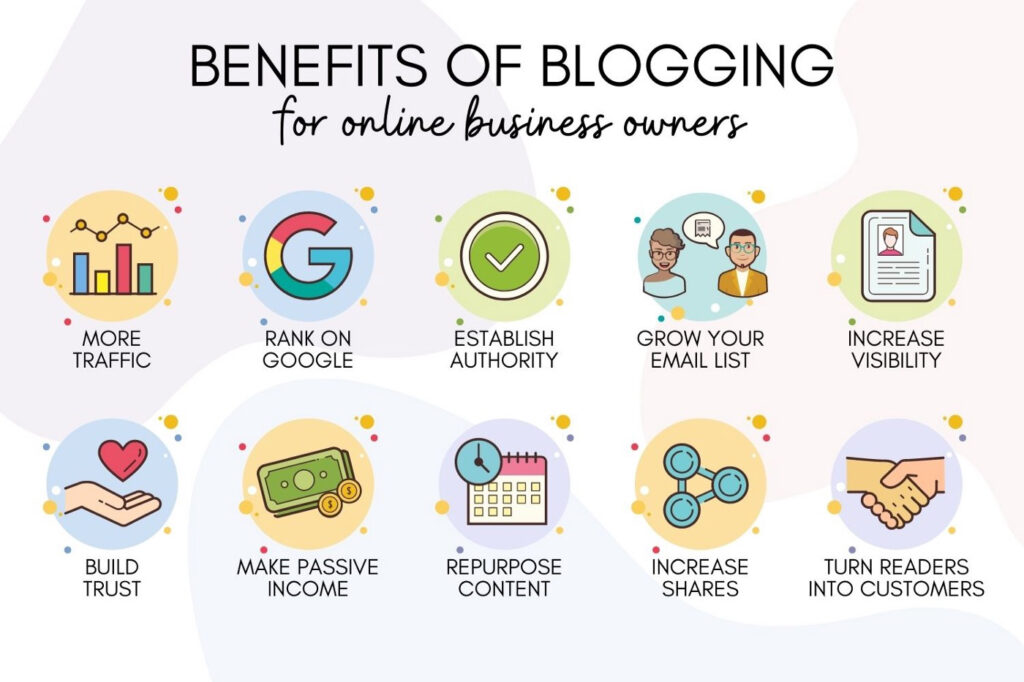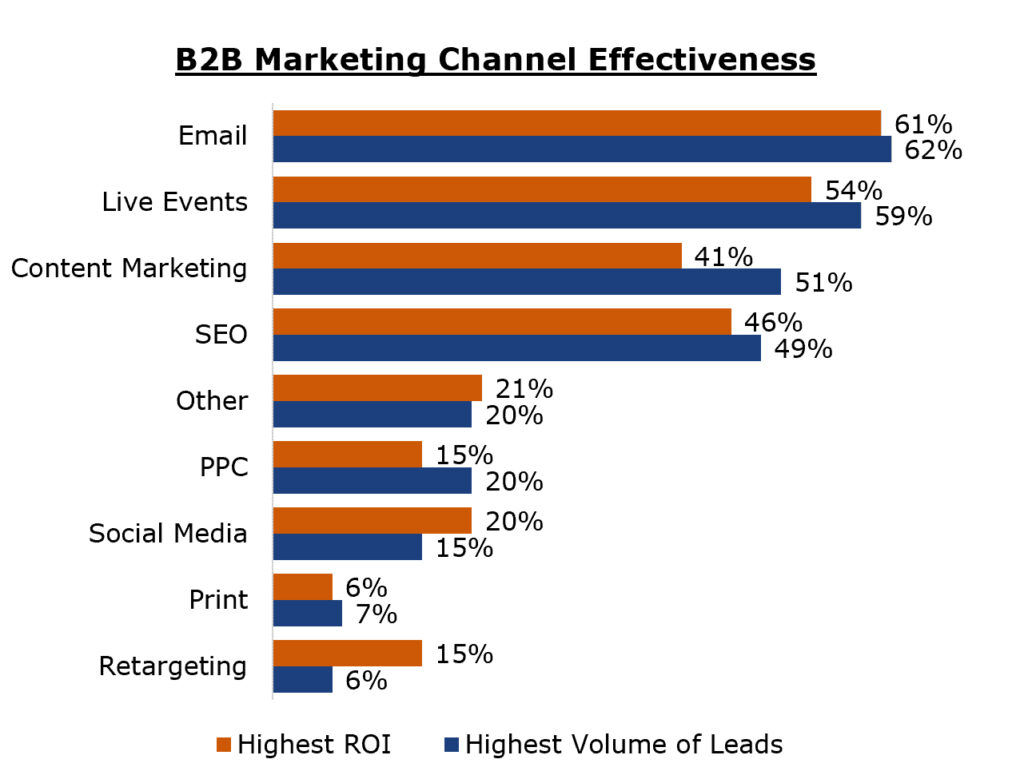A surprising 61% of marketers deemed lead generation to be their number one challenge. So, if you’ve been feeling the struggle lately, you are not alone, but this isn’t something you can walk away from in business. You need to generate leads in order to convert prospects into paying customers if you want to turn a profit. And as a manufacturer, there are some smart B2B lead generation strategies you can implement to effortlessly reach your sales goals.

In this article, we take a look at the lead generation process and share strategies you can begin using right away to attract and convert qualified leads.
Key Takeaways:
- People can’t buy from you if they don’t know who you are, so put yourself out there, whether it’s through a blog or social media.
- An essential element of lead generation is capturing a prospect’s personal information so you can connect with them later to nurture relationships.
- Generating leads starts with knowing who your ideal buyer is so you can address their interests and needs through your content and offerings.
The Important First Step of Lead Generation
In order to succeed in any business, you need to create a buyer persona that effectively describes the people within your target audience. This is one of the first things to do before implementing B2B lead generation strategies because it’ll shape every move you make within your business going forward.
But what do you need to know to develop a buyer persona? Here are some basics:
- Demographics: Because you’re targeting other businesses, you need to know some essential information about them. This includes the industry they’re in, the type of work they do, the size of their organization, and what their yearly revenue is.
- Pain Points: When you know what your ideal buyer is struggling with, you can develop a solution to ease their stress. You can address their pain points through your free content (blog, social media, etc.) so you can attract them to your company.
- End Goals: Knowing their end goal allows you to shape the offerings you provide so they can see it’ll be worthwhile to invest in you over a competitor.
When you know who your ideal buyer is, you can create content and offerings with them in mind. This ensures everything you publish resonates and allows you to eliminate any barriers preventing them from buying. Plus, knowing who your audience is helps you choose the social media platforms that are worth your time and energy.
5 B2B Lead Generation Strategies for Manufacturers
Now the question is, how do you begin attracting qualified leads? Here are five smart ways your manufacturing company can generate leads and hit your sales goals:
1. Consistently Publish Content Online
There are several ways you can create high-quality, valuable content for your audience to consume. It ultimately depends on what allows your strengths to shine through, while also appealing to how your audience likes to receive content. You might choose to blog, create video content, or host a podcast. And you’ll probably want to use different social media platforms as well. You want to make sure you’re showing up and putting your company out there online.

How is this considered one of the more effective B2B lead generation strategies? Well, creating content boosts brand awareness. People take notice when you’re adding value and being of service through your content. Plus, they’ll be more inclined to share your published work with their own communities, attracting even more people. Use content to communicate your expertise and position yourself as an authority so you can establish a trusting relationship with your target audience.
2. Prioritize Engagement and Building Relationships
No matter what industry you’re in, the most transformative thing you can do is to build relationships with potential buyers. People do business with those they feel a connection with. And if you want to stand out from the competitors in your industry, you can do so by establishing and nurturing these relationships. Not only does it help in building the Know, Like, and Trust Factor, but it shows those you’re connecting with that you genuinely care about what they have to say.
Don’t be afraid to engage with people in the comments section or through social media direct messages. If you want to take it a step further, you can follow up with past clients or cold leads to potentially regenerate interest in your company’s offerings.
3. Get Serious About Email Marketing
Going back to the topic of consistently publishing content, it is wise to build an email list and keep it “warm” by sending out a regular newsletter. This is another powerful tactic for nurturing relationships with prospective buyers because you’re able to stay in touch with them long after they’ve left your website. With every newsletter you send, focus on providing value by delivering exactly what your ideal buyer would like to see from you.

As you can see from the graph above, email marketing reigns supreme when it comes to the effectiveness of marketing channels. Not only does it deliver the highest return on investment (ROI), but it has been shown to generate the highest amount of leads as well.
4. Be Aware of What Your Competitors Are Doing
Your competitors can be a great source of inspiration, which is why it’s one of the most important B2B lead generation strategies to implement. Now, this doesn’t mean you should check out their content and copy what they’re doing. Rather, you should do this simply to get your creative juices flowing and to gain a better understanding of your target audience. Plus, you can identify what’s helping them generate leads and replicate that approach.
Take note of the content their audience is engaging with and what doesn’t seem to be resonating. For example, you might notice a competitor gets significant engagement on Facebook, but you’re not using the platform to its full advantage. Similarly, if a competitor has a successful blog, maybe you should create one as well. Find ways to emulate what works for them without directly copying their content.
You’ll even want to read the comments their audience leaves on their posts. Pay attention to the questions they’re asking, things they’re requesting, and any problems they have. Then, you can address those things with your content or other offerings within your company and potentially attract your competitor’s unsatisfied customers your way.
5. Attend Live Events or Host Your Own
And finally, live events are not to be overlooked when it comes to B2B lead generation strategies. The good news is, there are tons of ways you can go about live events, whether you’re attending them or hosting your own.
Attending events gives you the opportunity to meet plenty of new people who may be interested in what you offer. Alternatively, you can host your own to attract a crowd of potential customers. Live events can be conventions, conferences, or something as simple as a virtual webinar. Get creative and pursue the ideas that’ll help you reach your target audience.
Drive Better Results With Your Lead Generation
Our mission at Shanahan Strategy is to help manufacturers like you build a powerful marketing strategy that attracts qualified leads. We’ll help you position your company so that it appeals to more buyers and ultimately converts more prospects into paying customers.
Interested in learning more? Schedule a free consultation with us today.

